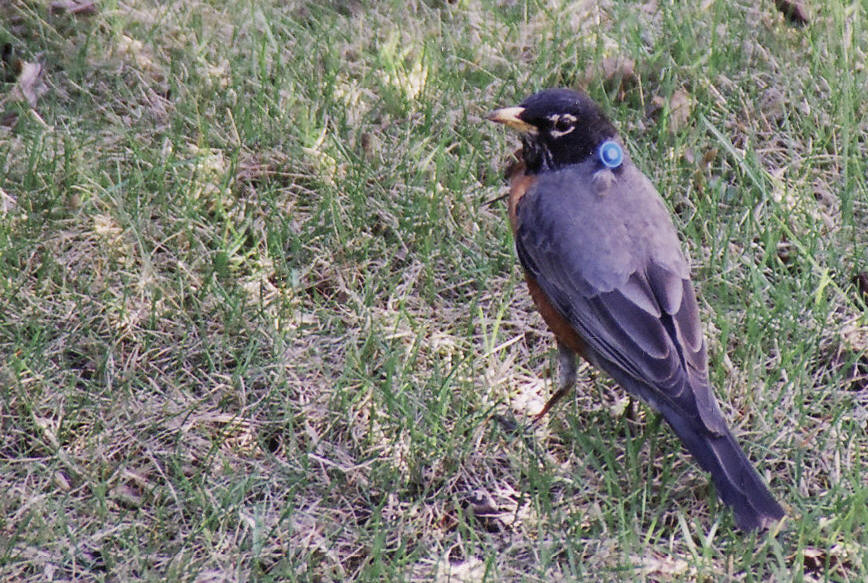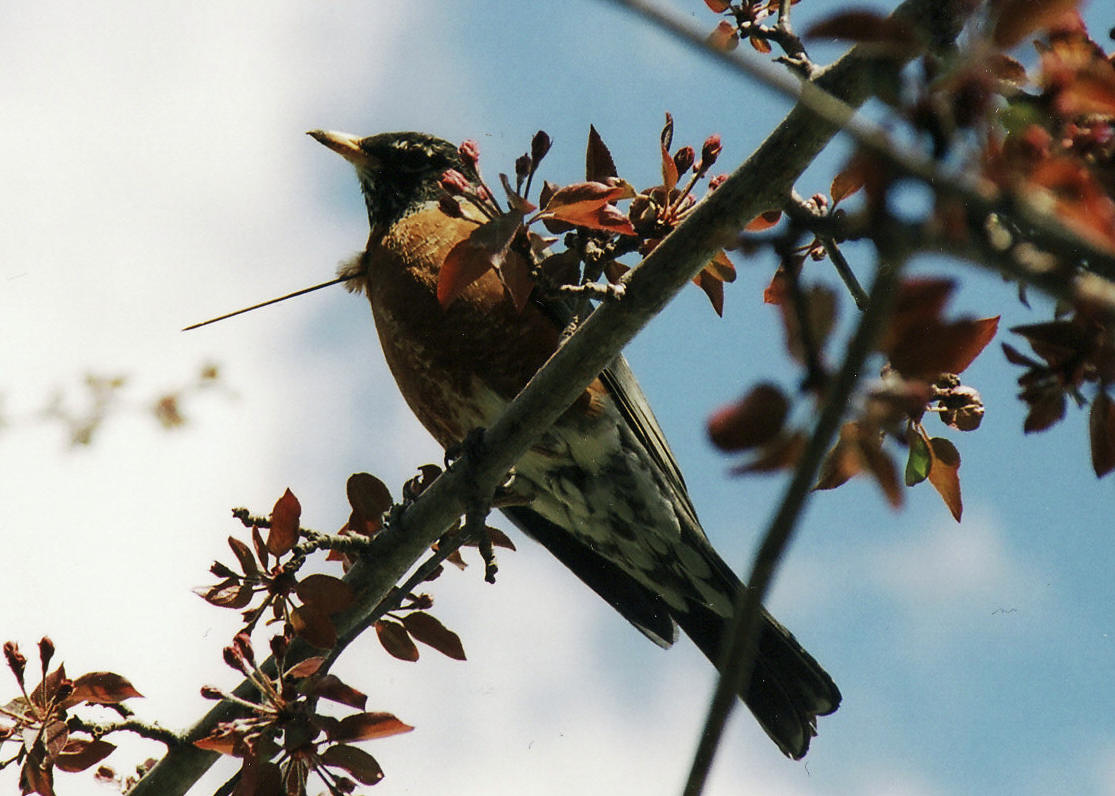Last time I posted about a sick Ring-billed Gull found in Fish Creek Park (see post). I wondered if it would have been accepted at any of the local wildlife rehabilitation centres. 
Ring-billed Gulls, which were in trouble in the early twentieth century, have been increasing in numbers and expanding their breeding range ever since they were given protection under the Migratory Bird Treaty in 1916. They lay one to four eggs (more usually two or three), and have an unusually high hatch rate of nearly 80%. It takes three years to reach breeding age, and a typical lifespan is ten to fifteen years. So even though they do have a high rate of loss of young birds, the population has grown to the point where they are now the most common gull in North America, and are considered by many to be a pest that needs management.

Adult Ring-billed Gull in Valleyview Park Pond, SE Calgary, 2007
Nevertheless, it turns out that two of the local wildlife rehabilitation centres that I contacted would accept an injured or sick Ring-billed Gull. The Alberta Institute for Wildlife Conservation (AIWC), located north of the city near Madden, accepts all bird species except House Sparrows and European Starlings, non-native birds which are considered to be invasive. The Calgary Wildlife Rehabilitation Society (CWRS), located in northwest Calgary, will accept any wildlife but discourages people from bringing in Rock Pigeons and Richardson’s Ground Squirrels. The AIWC will send a volunteer to pick up wildlife, but you have to bring the animal in to the CWRS.
These organizations, and others like them across the province, take sick, injured, or orphaned wildlife and rehabilitate them, if possible, for return to the wild. They typically are volunteer-based and include veterinarians and experts in wildlife rehabilitation.
If you find a bird or other animal in distress, it is important first to be able to recognize if it is really injured or orphaned, or behaving normally, and second, to be able to handle it safely. The above organizations have excellent information about this on their websites, which is well worth reading for any birder. If you think you might want to use these services, keep their phone numbers handy and know what to do if you find an injured bird.
I asked the AIWC if there are times in the year when they are so busy that taking common birds like Ring-billed Gulls might put too much of a strain on their resources, but they assured me that although it does get very busy sometimes, they never refuse any animal and always manage to properly look after them all. If you find an injured bird, it is up to you if you want to pursue rescuing it.
All of the wildlife rehabilitation organizations rely heavily on volunteers, so there are plenty of opportunities to get involved if you are interested in helping. They also have regular open houses and give presentations to inform the public about their work. AIWC recently spoke to the Bird Studies Group of Nature Calgary.

Blackjack, a Swainson’s Hawk used by AIWC in their educational presentations, at the Bird Studies Group meeting.
Here are links to the websites of some local wildlife rehabilitation organizations.
Alberta Institute for Wildlife Conservation
Calgary Wildlife Rehabilitation Society
Cochrane Ecological Institute
Medicine River Wildlife Centre
Alberta Wildlife Rehabilitator’s Association
Posted by Bob Lefebvre









